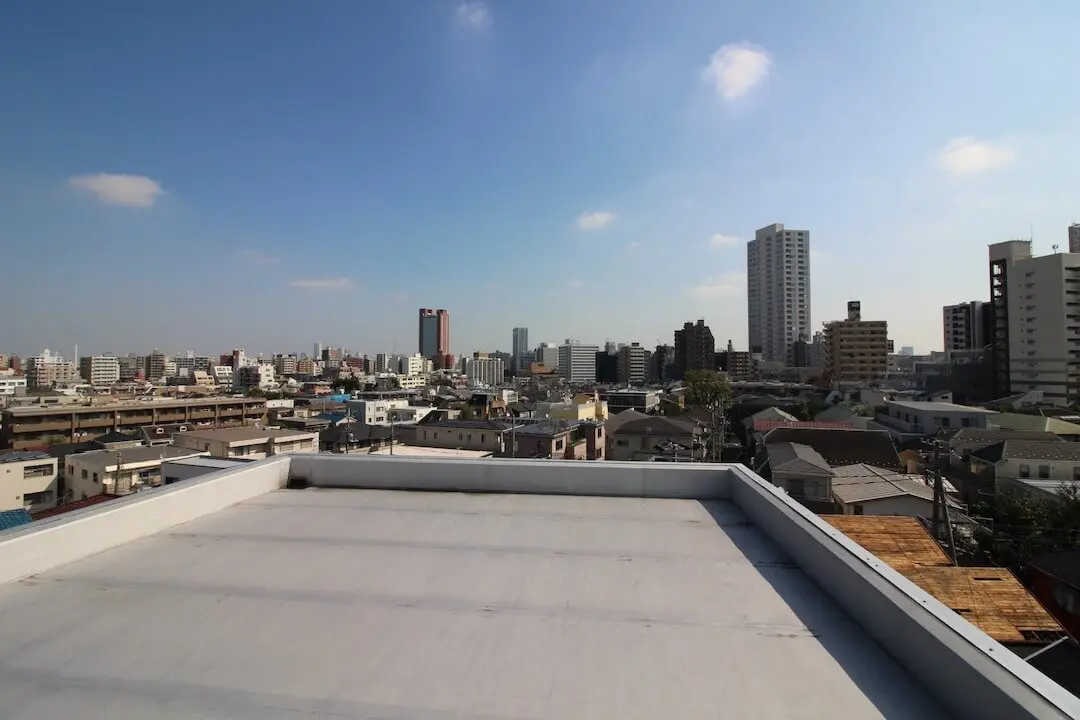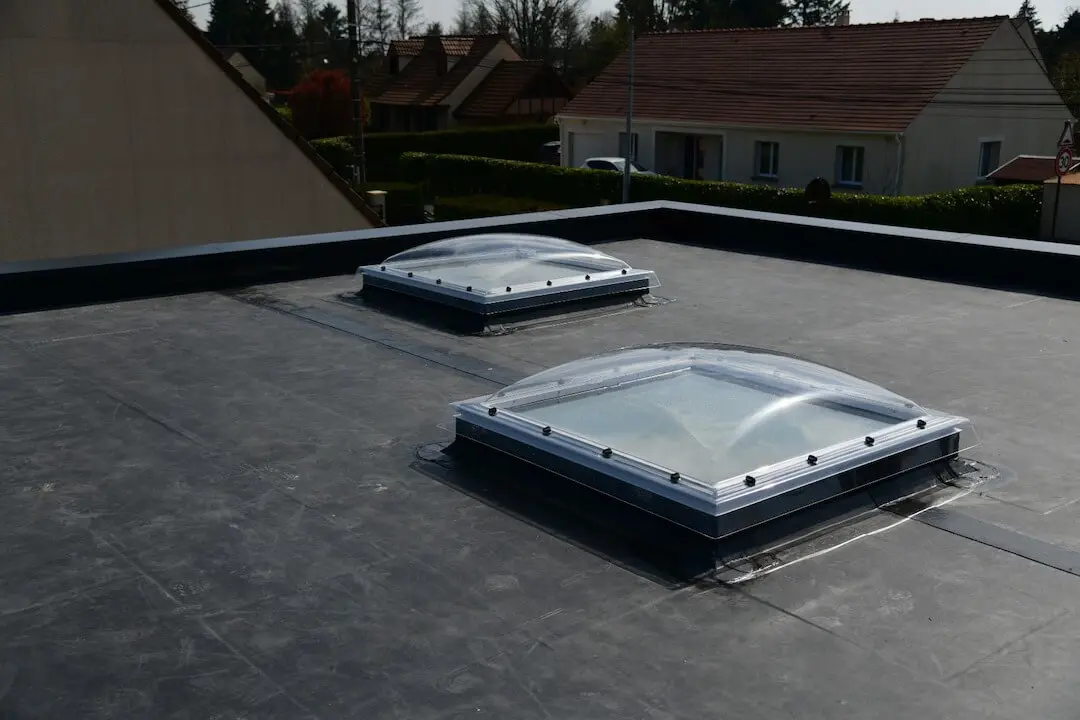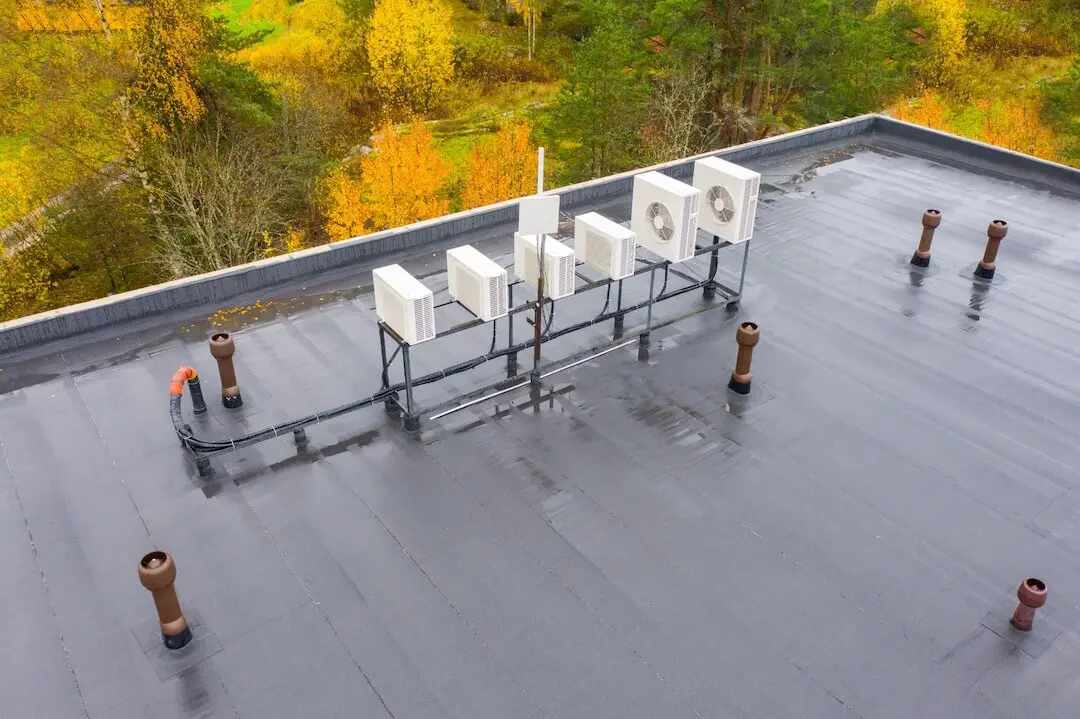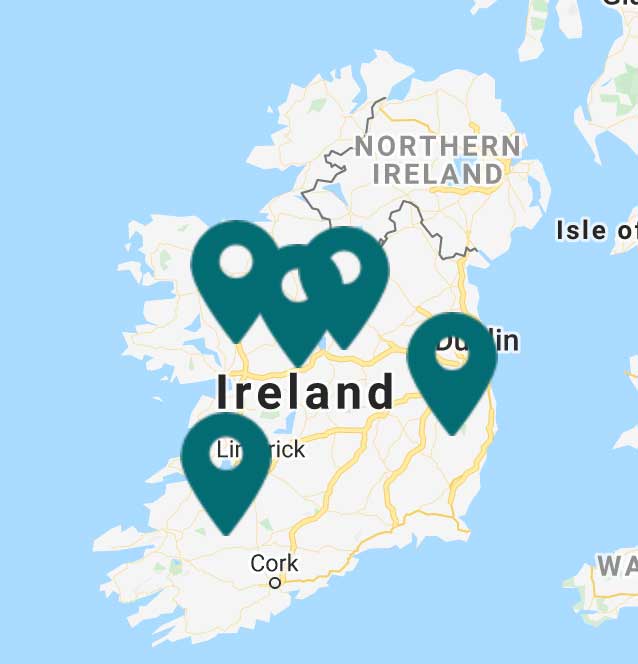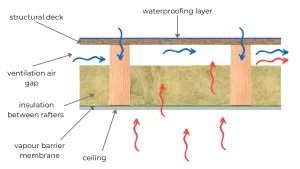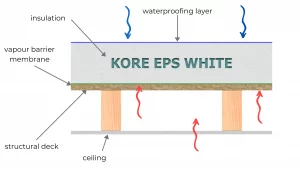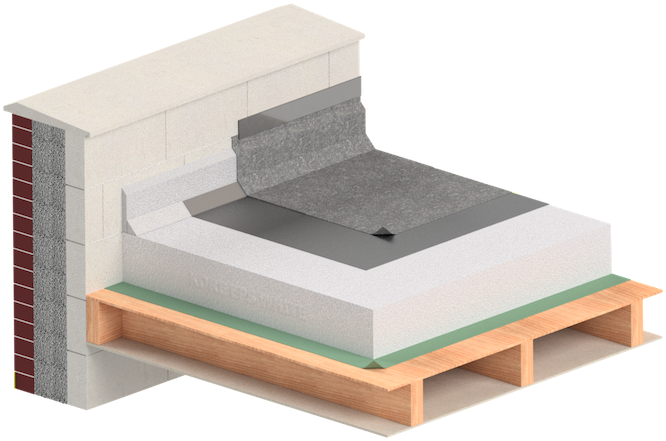
Flat roof construction has grown in popularity over the past decade, with more and more commercial and residential new builds having a flat roof with pedestrianised access. An important aspect of the flat roof construction is the insulation placement, thermal bridging, water control and mitigating air and water leakages. With all of this in mind KORE have developed a series of blogs to help you understand flat roof construction, the types, methods, benefits and more.
A flat roof can be defined as one having a pitch less than 10 degrees to the horizontal. A flat roof is not a completely flat structure, it is designed with a fall (slope) to allow water to run off.
Flat roofs are often associated with arid countries, where there is little rainfall, however in recent years, we have seen a huge rise in flat roof construction in office and residential buildings. The rise in flat roof construction can be contributed to the cost efficiency of the build, advancements in design, structure and durability, as well as the ease of use and maintenance.
Cold Roof & Warm Roof
There are two main types of flat roof; cold and warm roof. The main distinguishing feature between the two is the position of the insulation layer. In a cold roof, the insulation is placed below the roof deck, between the rafters. In a warm roof, the insulation is placed above the roof deck.
A cold roof design (above) is where the insulation is placed within a ventilated void space, usually leaving a 50mm gap between the top of the insulation, and the roof deck above, allowing air to circulate. This form of roof design is no longer recommended, as proper void ventilation and an effective vapour control layer at ceiling level is difficult to achieve, as well as the lack of insulation above resulting in cold air being conducted through the rafters, into the air flow space, and subsequently into the room below.
A cold flat roof is where the insulation is between or between and below the roof joists, constructed from the inside out consisting of layering of plasterboard, vapour barrier membrane, insulation between the rafters, air space, board then a waterproof membrane. The lack of insulation above can result in a high risk of thermal bridging. The use of this type of roof design can result in serious condensation problems and careful calculation to balance the insulation thickness above and below the deck is needed to achieve success.
A warm roof design (above) is where the insulation is placed immediately below the waterproofing membrane and above the vapour control layer which is bonded to the supporting deck. This composition ensures the control of condensation, little or no thermal bridging, and is usually the recommended option for insulated flat roof design for both new builds and retrofit projects.
In a warm roof configuration, a metal lined bituminous vapour control layer is recommended to achieve the highest performance standards, and is a requirement over high humidity environments (e.g. swimming pools). It is essential that the VCL is properly attached to the substrate and all side and end laps are fully sealed, so interstitial condensation does not occur.
A warm flat roof design is where all the insulation is above the joists/deck, immediately below the waterproofing layer, making them part of the warm fabric of the building. The vapour control layer is above the decking but below the insulation. The insulation can be adhered, mechanically fixed or loose laid. An adequate slope must be established on the warm flat roof to prevent water ponding from occurring.
EPS insulation is a great choice for flat roof construction as it has superior compressive strength, can be cut to any size, can easily create the slope necessary for warm flat roof construction or be shiplapped to improve thermal performance.
Benefits of KORE EPS for Flat Roofs
Consistent R-Value
|
Superior Performance
|
Design Attributes
|
Environmental Benefits
|
The waterproofing membrane is an integral element of a warm flat roof, that acts as a barrier to moisture. There are three main types-
- Mineral felt roofing- made up of mixed substances including bitumen (asphalt or coal tar pitch), creating a sticky, viscous and waterproof surface.
- EPDM rubber- the most common due to its durability, low maintenance cost, and rainwater run off accessibility.
- Fibreglass GRP-has excellent strength properties and can also be moulded to any shape, and structure.
The vapour control layer is another essential component to warm roof design, to reduce the risk of interstitial condensation. This layer reduced uncontrolled air leakages and heat loss. It is typically installed on the internal side of the insulation to control the passage of warm moist air (water vapour) entering the structure.
In our next blog in this series, we will look at types of flat roof construction including the inverted flat roof, green roof, tapered roof and more.
Learn more about KORE Flat Roof Insulation
